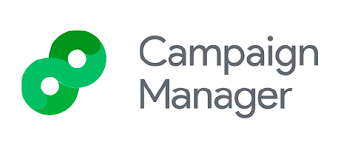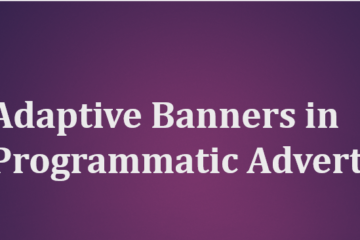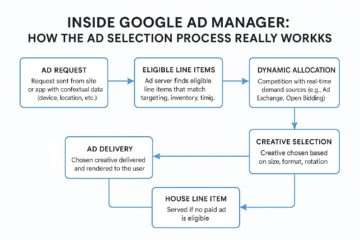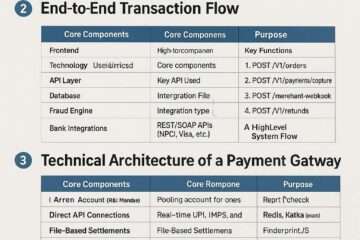
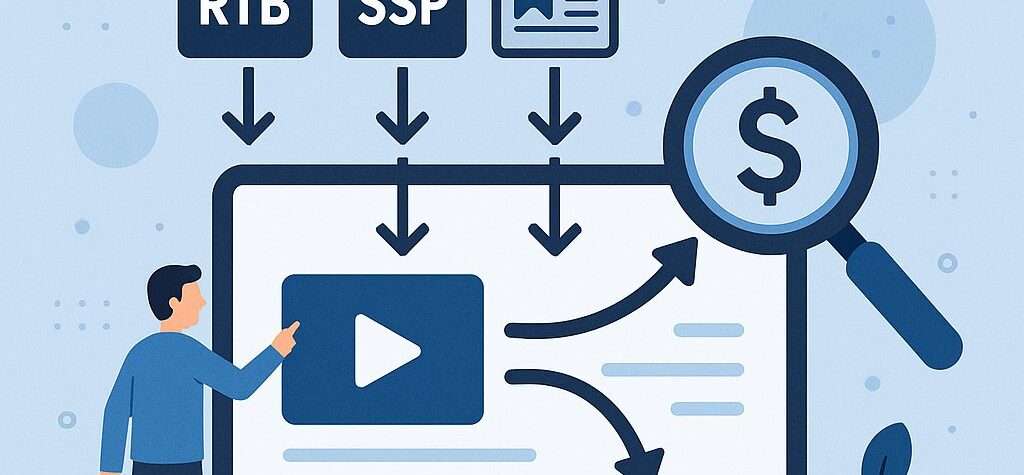
Introduction
Programmatic advertising has revolutionized how digital ads are bought and sold, enabling advertisers to reach targeted audiences at scale through automated, real-time bidding. However, the complexity of the programmatic supply chain—often involving multiple intermediaries like supply-side platforms (SSPs), demand-side platforms (DSPs), ad exchanges, and resellers—can lead to inefficiencies, including high fees, lack of transparency, and wasted ad spend. Studies estimate that up to 40% of programmatic advertising budgets can be lost to intermediaries and inefficiencies in the supply chain.
Supply Path Optimization (SPO) has emerged as a critical strategy to address these challenges. SPO involves streamlining the ad supply chain by reducing the number of intermediaries, prioritizing direct and transparent paths to publisher inventory, and leveraging data-driven insights to enhance efficiency, performance, and return on investment (ROI). In India, a rapidly growing digital advertising market, ad tech companies like InMobi, AdPushup, PubMatic, OpenX, and global giants such as Google, Meta (Facebook), and Amazon are implementing SPO strategies to help advertisers optimize ad performance and maximize revenue.
This article explores the concept of SPO, its importance in programmatic advertising, and how leading ad tech companies in India are collaborating with advertisers to implement SPO. We’ll dive into real-world examples of SPO initiatives by InMobi, AdPushup, PubMatic, OpenX, Google, Meta, and Amazon, highlighting their approaches and outcomes.
What is Supply Path Optimization (SPO)?
SPO refers to the process of simplifying and optimizing the programmatic advertising supply chain to create the most direct, transparent, and efficient path between advertisers and publishers. The goal is to reduce costs, improve ad performance, and enhance transparency by minimizing intermediaries, combating fraud, and prioritizing high-quality inventory.
Key Objectives of SPO
- Economic Control: Ensure more of the advertiser’s budget reaches the publisher by reducing intermediary fees.
- Transparency: Provide visibility into the supply chain, including fees, auction dynamics, and inventory sources.
- Quality Control: Prioritize premium, fraud-free inventory to improve ad performance and brand safety.
- Efficiency: Streamline infrastructure to reduce latency and duplicated bids, improving scalability.
- Sustainability: Minimize the environmental impact of ad transactions by reducing unnecessary hops in the supply chain.
Why SPO Matters in India
India’s digital advertising market is projected to reach $21 billion by 2028, driven by mobile penetration, affordable data, and a growing base of digitally savvy consumers. Programmatic advertising accounts for a significant portion of this spend, but inefficiencies in the supply chain—such as reseller fees, lack of transparency, and fraud—can erode ROI. SPO is particularly relevant in India, where advertisers demand cost-effective solutions to reach diverse, mobile-first audiences.
How Ad Tech Companies in India Are Implementing SPO
India’s ad tech ecosystem is vibrant, with local players like InMobi, AdPushup, PubMatic, and OpenX competing alongside global giants like Google, Meta, and Amazon. Below, we explore how these companies are leveraging SPO to optimize ad performance and revenue, supported by real-world examples.
1. InMobi: Streamlining In-App Advertising
InMobi, a leading mobile advertising platform in India, focuses heavily on in-app programmatic advertising, where SPO is critical due to the complexity of mobile supply chains. InMobi’s SPO strategy emphasizes transparency, direct supply access, and infrastructure efficiency, particularly through compliance with IAB Tech Lab standards like app-ads.txt, sellers.json, and the OpenRTB SupplyChain Object.
InMobi’s SPO Approach
- Transparency: InMobi provides advertisers with detailed insights into the intermediaries involved in each transaction, helping them identify efficient supply paths.
- Direct Supply: The platform prioritizes SSPs with direct publisher relationships to reduce hops and reseller fees.
- Header Bidding: InMobi supports header bidding in the in-app space, enabling advertisers to access inventory through more transparent and competitive auctions.
- Quality of Pipe: InMobi evaluates supply quality based on app premiumness, diversity, and fraud prevention measures.
Real-World Example
In 2019, InMobi collaborated with a global e-commerce brand to optimize its in-app advertising campaign in India. The brand was using multiple SSPs, resulting in duplicated bids and high CPMs. InMobi implemented an SPO strategy by:
- Analyzing supply paths using sellers.json to identify direct SSP connections.
- Consolidating spend through two SSPs offering header bidding, reducing intermediaries.
- Leveraging InMobi’s DSP to prioritize premium apps with high engagement rates.
Outcome: The campaign saw a 25% reduction in CPMs and a 30% improvement in click-through rates (CTRs), with the brand reallocating savings to expand its audience reach.
2. AdPushup: Empowering Publishers with SPO
AdPushup, a publisher-focused ad tech platform, specializes in ad inventory optimization and monetization. While primarily serving publishers, AdPushup’s SPO efforts benefit advertisers by ensuring high-quality, direct inventory access through optimized supply chains.
AdPushup’s SPO Approach
- Header Bidding Integration: AdPushup enables publishers to implement header bidding, allowing advertisers to access inventory through competitive auctions.
- Real-Time Analytics: Publishers receive real-time data on inventory performance, helping advertisers identify efficient supply paths.
- Direct Advertiser Access: AdPushup connects publishers with direct advertiser demand, reducing reliance on resellers.
- Audience Segmentation: Using first-party data, AdPushup segments audiences to improve targeting precision for advertisers.
Real-World Example
In 2024, AdPushup partnered with a leading Indian news publisher to optimize its programmatic ad revenue. The publisher was losing revenue due to multiple SSPs and resellers inflating costs. AdPushup implemented an SPO strategy by:
- Deploying header bidding to consolidate demand from top DSPs.
- Using real-time analytics to identify supply paths with the lowest eCPMs and highest fill rates.
- Connecting the publisher directly with advertisers through AdPushup’s demand partners.
Outcome: The publisher increased ad revenue by 20%, while advertisers benefited from a 15% reduction in eCPMs and improved ROI due to direct access to premium inventory.
3. PubMatic: Driving Transparency and Scalability
PubMatic, a global SSP with a strong presence in India, is a leader in SPO, focusing on transparency, technical efficiency, and customized supply chain solutions. PubMatic’s partnerships with agencies and advertisers emphasize reducing intermediaries and optimizing auction dynamics.
PubMatic’s SPO Approach
- Transparent Fee Structures: PubMatic provides clear visibility into SSP fees, enabling advertisers to negotiate competitive rates.
- Direct Publisher Relationships: The platform prioritizes direct connections with premium publishers like Times Internet.
- Advanced Analytics: PubMatic’s Media Buyer Console offers insights into supply path performance, helping advertisers refine bidding strategies.
- Sustainability: PubMatic’s SPO efforts reduce carbon emissions by minimizing unnecessary hops in the supply chain.
Real-World Example
In 2024, PubMatic partnered with Wpromote, a digital marketing agency, to optimize the supply chain for a retail brand’s programmatic campaign in India. The brand faced high costs due to multiple SSPs and resellers. PubMatic’s SPO strategy included:
- Consolidating spend through PubMatic’s SSP, which offered direct access to premium publishers.
- Implementing first-price auctions to improve transparency and bidding efficiency.
- Using PubMatic’s analytics to identify supply paths with the lowest eCPMs and highest viewability.
Outcome: The campaign achieved a 30% reduction in ad spend leakage, a 20% increase in ROI, and a 15% reduction in carbon emissions due to fewer intermediaries.
4. OpenX: Optimizing Global and Local Supply Chains
OpenX, a global ad exchange with operations in India, focuses on SPO through its programmatic marketplace, which processes billions of bids monthly. OpenX’s SPO strategy emphasizes header bidding, direct advertiser demand, and real-time optimization.
OpenX’s SPO Approach
- Header Bidding: OpenX integrates header bidding with its ad exchange to maximize competition and transparency.
- Programmatic Direct: OpenX offers direct deals with advertisers, bypassing intermediaries.
- Global Marketplace: OpenX connects Indian publishers with global advertisers, optimizing supply paths for scale.
- Real-Time Bidding: OpenX’s platform dynamically adjusts bids to prioritize efficient paths.
Real-World Example
In 2023, OpenX worked with a travel brand to optimize its programmatic campaign targeting Indian audiences. The brand was using multiple ad exchanges, leading to high costs and low viewability. OpenX implemented an SPO strategy by:
- Consolidating demand through OpenX’s header bidding solution.
- Prioritizing direct publisher connections via OpenX Programmatic Direct.
- Using real-time data to shift spend to supply paths with high viewability and low eCPMs.
Outcome: The campaign saw a 22% reduction in CPMs, a 35% increase in viewability, and a 25% improvement in conversion rates.
5. Google: Dominating with Scale and Efficiency
Google, through its Google Ad Exchange (AdX) and DoubleClick Bid Manager, remains a dominant player in programmatic advertising. While Google’s scale offers unparalleled reach, its complex supply chain can introduce inefficiencies. Google’s SPO efforts focus on streamlining paths within its ecosystem and improving transparency.
Google’s SPO Approach
- First-Price Auctions: Google AdX transitioned to first-price auctions to enhance transparency and bidding efficiency.
- Unified Bidding: Google’s unified bidding system reduces duplicated bids and prioritizes efficient paths.
- Direct Deals: Google enables direct deals with premium publishers through AdX.
- Data-Driven Optimization: Google leverages its vast data to identify high-performing supply paths.
Real-World Example
In 2024, a leading Indian FMCG brand used Google AdX to optimize its programmatic video campaign. The brand faced high CPMs due to multiple intermediaries. Google implemented an SPO strategy by:
- Shifting spend to direct publisher deals through AdX.
- Using first-price auctions to ensure transparent bidding.
- Leveraging Google’s analytics to prioritize supply paths with high completion rates.
Outcome: The campaign achieved a 20% reduction in CPMs, a 30% increase in video completion rates, and a 15% improvement in brand lift.
6. Meta (Facebook): Leveraging Social Programmatic
Meta’s advertising ecosystem, including Facebook and Instagram, is a powerhouse for social programmatic advertising. Meta’s SPO strategy focuses on high-impact ad formats, precise targeting, and direct access to its vast user base.
Meta’s SPO Approach
- High-Impact Formats: Meta prioritizes formats like Carousel Ads and Dynamic Ads to maximize engagement.
- Direct Inventory Access: Advertisers access Meta’s inventory directly through its ad platform, minimizing intermediaries.
- Audience Targeting: Meta’s advanced targeting capabilities ensure ads reach the right users, reducing wasted impressions.
- Transparency in Reporting: Meta provides detailed auction metrics to optimize supply paths.
Real-World Example
In 2023, an Indian e-commerce brand partnered with Meta to optimize its Instagram ad campaign. The brand was struggling with high CPMs and low conversions. Meta’s SPO strategy included:
- Prioritizing direct inventory access through Meta’s ad platform.
- Using Dynamic Ads to target high-intent users.
- Analyzing auction data to shift spend to supply paths with high engagement.
Outcome: The campaign saw a 25% reduction in CPMs, a 40% increase in conversions, and a 20% improvement in ROI.
7. Amazon: Harnessing E-Commerce Data
Amazon’s advertising platform, Amazon DSP, leverages its e-commerce data to offer highly targeted programmatic advertising. Amazon’s SPO strategy focuses on direct inventory access, transparency, and performance-driven optimization.
Amazon’s SPO Approach
- Direct Inventory: Amazon offers access to its owned and operated inventory, reducing intermediaries.
- E-Commerce Targeting: Amazon uses purchase data to optimize supply paths for high-intent audiences.
- Transparency: Amazon provides clear reporting on ad performance and supply chain costs.
- Programmatic Scale: Amazon DSP connects advertisers with both Amazon and third-party inventory.
Real-World Example
In 2024, a consumer electronics brand in India used Amazon DSP to optimize its programmatic campaign. The brand faced inefficiencies due to multiple SSPs. Amazon implemented an SPO strategy by:
- Prioritizing Amazon’s owned inventory for direct access.
- Using purchase data to target users with high purchase intent.
- Consolidating spend through Amazon DSP to reduce intermediary fees.
Outcome: The campaign achieved a 30% reduction in eCPMs, a 50% increase in conversion rates, and a 25% improvement in ROI.
Challenges and Future of SPO in India
Challenges
- Complexity: The programmatic ecosystem in India is fragmented, with multiple SSPs, DSPs, and exchanges complicating SPO efforts.
- Ad Fraud: Fraudulent inventory remains a concern, requiring robust verification tools.
- Adoption: Only about 20% of advertisers have implemented SPO, indicating a need for greater awareness.
- Sustainability: While SPO can reduce carbon emissions, broader industry adoption is needed to make a significant impact.
Future Trends
- Increased Adoption: As transparency and efficiency become priorities, SPO adoption is expected to grow in India.
- AI and Automation: AI-driven SPO tools will enable real-time optimization of supply paths.
- Header Bidding Growth: Header bidding will become more prevalent in in-app advertising, enhancing transparency.
- Sustainability Focus: Advertisers will prioritize SPO to reduce the environmental impact of programmatic campaigns.
Conclusion
Supply Path Optimization is transforming programmatic advertising in India by addressing inefficiencies, enhancing transparency, and maximizing ROI for advertisers and publishers. Ad tech companies like InMobi, AdPushup, PubMatic, and OpenX, alongside global players like Google, Meta, and Amazon, are leading the charge with innovative SPO strategies tailored to India’s dynamic digital market.
Real-world examples demonstrate the tangible benefits of SPO, from reduced CPMs and improved conversions to enhanced sustainability. As India’s programmatic advertising market continues to grow, SPO will play a pivotal role in ensuring that every ad dollar is spent effectively, delivering measurable results for advertisers and sustainable revenue for publishers.
By embracing SPO, advertisers in India can navigate the complexities of the programmatic ecosystem with confidence, leveraging data-driven insights and direct supply paths to achieve their marketing goals. The future of programmatic advertising in India is bright, and SPO is at the heart of this transformation.


















































